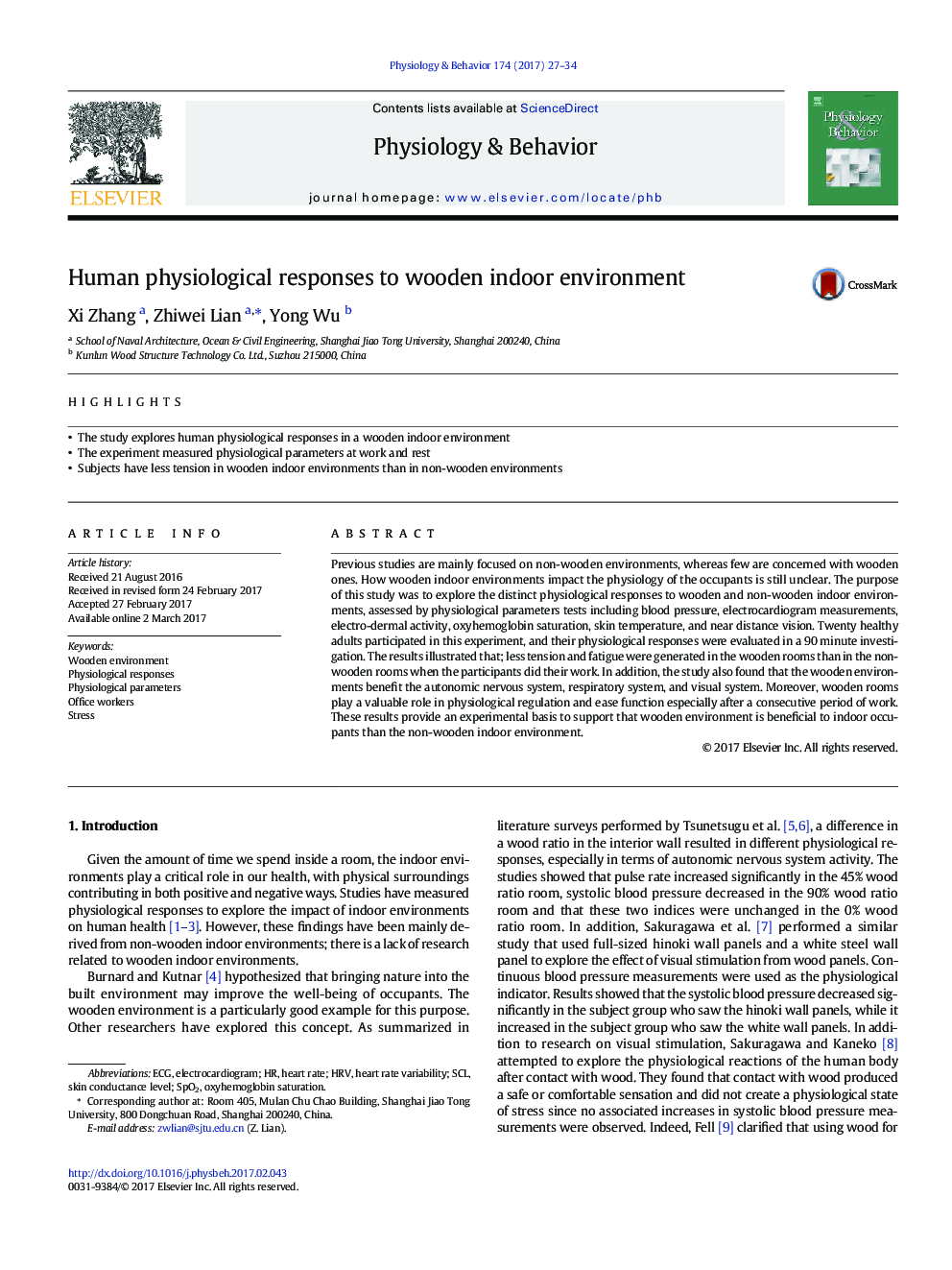| Article ID | Journal | Published Year | Pages | File Type |
|---|---|---|---|---|
| 5593693 | Physiology & Behavior | 2017 | 8 Pages |
Abstract
Previous studies are mainly focused on non-wooden environments, whereas few are concerned with wooden ones. How wooden indoor environments impact the physiology of the occupants is still unclear. The purpose of this study was to explore the distinct physiological responses to wooden and non-wooden indoor environments, assessed by physiological parameters tests including blood pressure, electrocardiogram measurements, electro-dermal activity, oxyhemoglobin saturation, skin temperature, and near distance vision. Twenty healthy adults participated in this experiment, and their physiological responses were evaluated in a 90Â minute investigation. The results illustrated that; less tension and fatigue were generated in the wooden rooms than in the non-wooden rooms when the participants did their work. In addition, the study also found that the wooden environments benefit the autonomic nervous system, respiratory system, and visual system. Moreover, wooden rooms play a valuable role in physiological regulation and ease function especially after a consecutive period of work. These results provide an experimental basis to support that wooden environment is beneficial to indoor occupants than the non-wooden indoor environment.
Keywords
Related Topics
Life Sciences
Biochemistry, Genetics and Molecular Biology
Physiology
Authors
Xi Zhang, Zhiwei Lian, Yong Wu,
